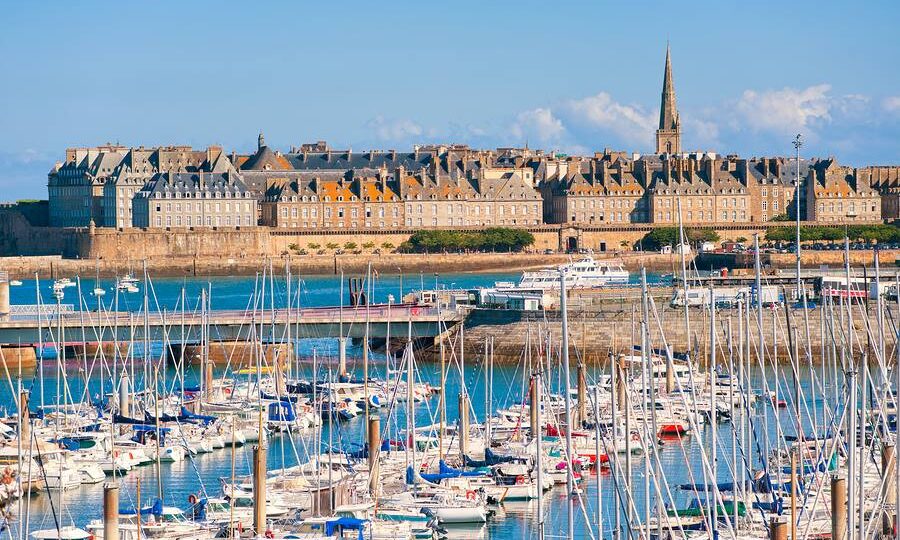What is Brittany Known For?
Sea bounded and defined by traditional character, the region of Brittany is a breathtaking area in northern France. Also nestled in bays along the Atlantic coastline are fishing villages. At the same time, the lush countryside is marked with spectacular views of fairy-tale castles and medieval villages.
From secluded sandy beaches and imposing seaside scenery to tranquil moors and fine forests, the landscape is quite varied; while its rocky northern coastline provides spectacular ocean views from its craggy promontories.
Brittany is also a place of legends, myths, and thrilling history. It has a Celtic influence with a Gaelic dialect, and the traditional cuisine is superb. “Galettes” (delectable buckwheat crepes) are served at Crêperies and dessert crepes accompanied with caramel, fresh seasonal strawberries, and chocolate as toppings.
Locals are proud of observing the ancient custom of ‘pardons’, a special kind of pilgrimage when Bretons (don period costumes) ask for forgiveness for their sins and go to a special festival and mass.
>>Also Read: Brittany Travel Guide
Here Are A Few Things Brittany is Famous For
Saint-Malo
The significant Breton port of Saint-Malo used to be an island close to the mainland. Circled by ramparts, this place has preserved the features of a medieval fortified coastal town. In WW2, Vieille Ville (the historic center of the town) was mostly destroyed, except for the old walls; the Cathédrale Saint-Vincent that was established in the 1100s; and the chateau that dates back to the 1300s and 1400s.
Saint-Malo was rebuilt after the war in its master style, with strait petit streets and towering granite houses. You should explore the section with the town’s old walls to discover majestic old buildings; stately public squares like the Place Chateaubriand, near the Porte Saint-Vincent; and atmospheric cobblestone streets.
Close to the Place Chateaubriand are steps that course to the ramparts. They date back to the 1100s, and a walk around the whole circuit should take around 60 minutes. Also, you can enjoy beautiful views of the town from the projecting bastions. What can also be seen are the sea, the estuary, and the offshore islands.
Beneath the ramparts’ west side is Plage de Bon Secours, a sandy beach with spectacular facilities, including showers, a sea-water swimming pool, café, and restrooms. The beach also boasts of the town’s bay and Dinard afar.
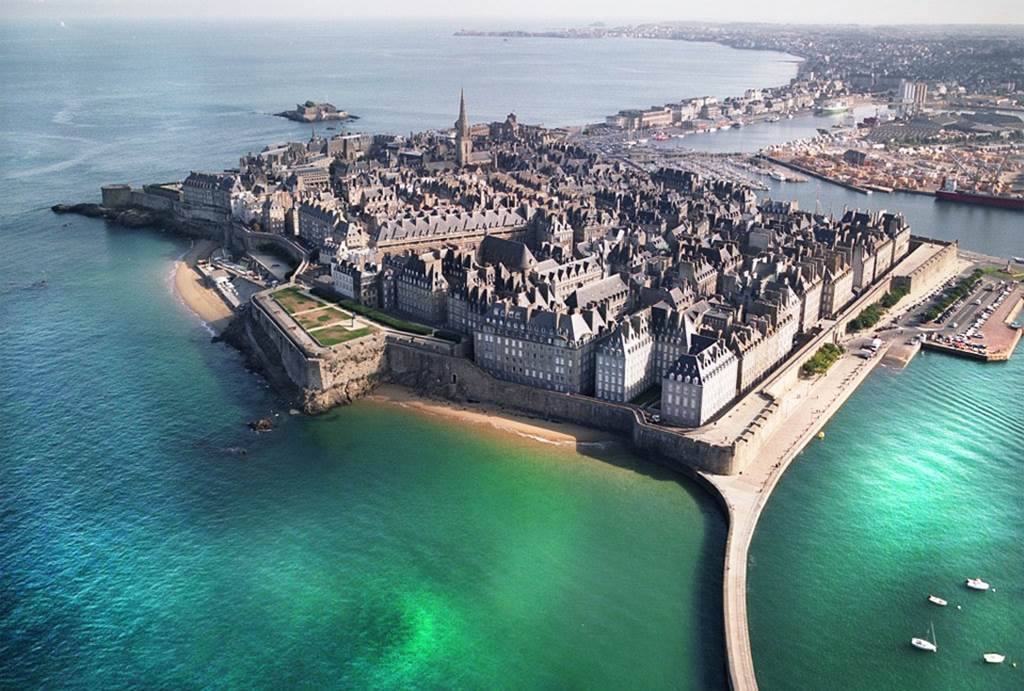
Quimper
Quimper is a terrific town on the banks of the Odet River with a fine pastel-painted half-timbered houses, pedestrian footbridges, and cobblestone streets. Named after Quimper’s first bishop, the Place Saint-Corentin is in the town’s center. The Cathedrale Saint-Corentin is in the square and was built between the 1200s and 1400s. And there is the iconic figure of King Gradion that overlooks the town between the cathedral’s two high towers. The cathedral is a lot by stained-glass windows from the 1400s.
There is the Musée des Beaux-Arts that highlight a great fine arts collection in a pleasant Neoclassical building, just across the cathedral. The major attractions here are the works by Flemish, French, Dutch, and Italian painters, as well as pieces by Max Jacob and Pont-Aven (the Ecole de Pont-Aven), the Impressionist painters.
In the former Bishop’s Palace, south of the cathedral, is the Musée Départmental Breton (Breton Museum) with an assemblage of folk costumes, ceramics, archaeological objects, and artworks that show the region’s rich cultural heritage. You should also check out the museum’s collection of landscape paintings that show the region’s Finistere area.

>>Also Read: Driving in France
Nantes
The old Breton port of Nantes, situated at the junction of Loire and Erdre Rivers, has played a significant role in the region’s history. Nantes used to be the capital of the Duchy of Brittany in the Middle Ages. It was there that Henry IV in 1598 signed the Edict of Nantes that secured for the Protestants, the freedom of religious belief.
Owing to its strategic port location, it thrived as a commercial town from the 1500s to the 1800s. The city has also been a university town since the 1400s. Nantes remains a prosperous center of higher education and is the sixth-largest French city.
Tourists many start their tour of the city in the historic center at the Chateau des Ducs de Bretagne (Castle of the Dukes of Brittany), established in the 1400s by Francois II. Circled by parkland, this massive fortress has all the basic features of a medieval castle: seven enormous towers, a water-filled moat, and hardy granite defensive walls.
The Musée d’Histoire de Nantes (History Museum of Nantes) is housed in the chateau. Part of its varied collection includes sculptures, paintings, photographs, scientific instruments, and model ships. Entry is not free at this museum, and the castle’s courtyard, rampart walks, and gardens are free and open to the public.
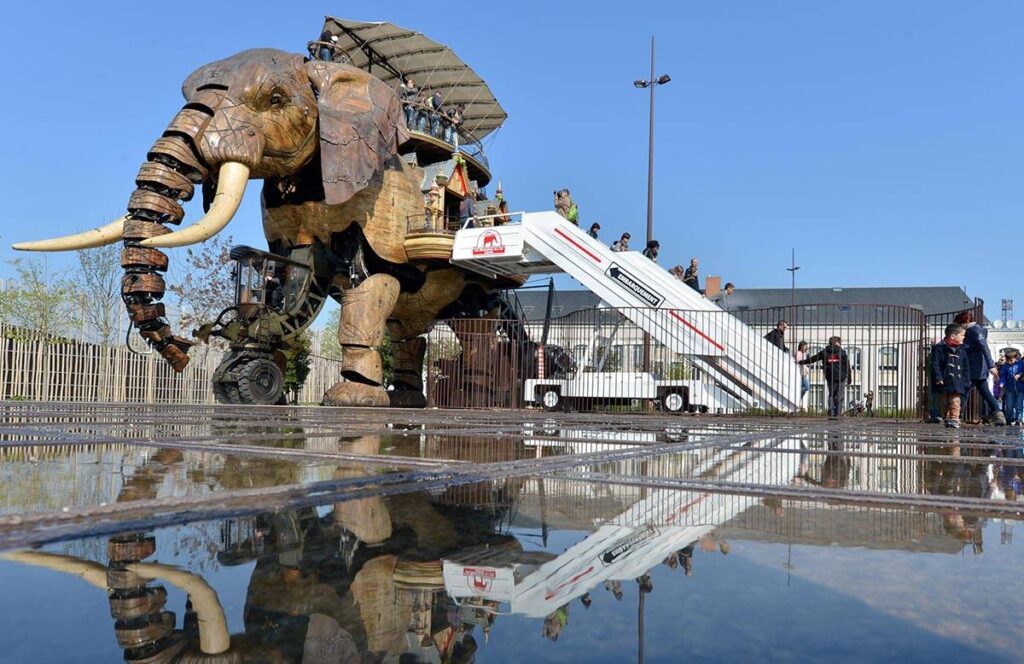
Also Read:
>>Is Nantes Worth Visiting?
>>Nantes Travel Guide
>>Is Nantes Safe?
>>What Is Nantes Famous For
>>Is Nantes Expensive?
Rennes
Even though it is a former regional capital, Rennes remains Brittany’s cultural and economic center. It is also a university town. Much of the city has been rebuilt following the 1720 fire and the Second World War. Today, Rennes is a modern city with well-connected streets. You can start a walking tour at the Place de la Mairie to adore the Hotel de Ville, which is also the Town Hall that was built in 1734.
The Eglise Saint-Sauveur is west of the Place de la Mairie, and it is a spectacular church built from the 1600s to the 1700s. The Place du Parlement de Bretagne is at the east of the Town Hall and is surrounded by 1700s houses. The Romanesque abbey church of Notre-Dame en Saint-Melaine is farther northeast. It amazes visitors with its expansively sculpted cloister and façade.
Cathédrale Saint-Pierre is many blocks away with a thrilling mix of architectural styles. Visitors can also take time to walk the narrow cobblestone lanes close to the cathedral, where there are brilliantly preserved historic structures like the Hotel de Blossac at 6 Rue du Chapitre.
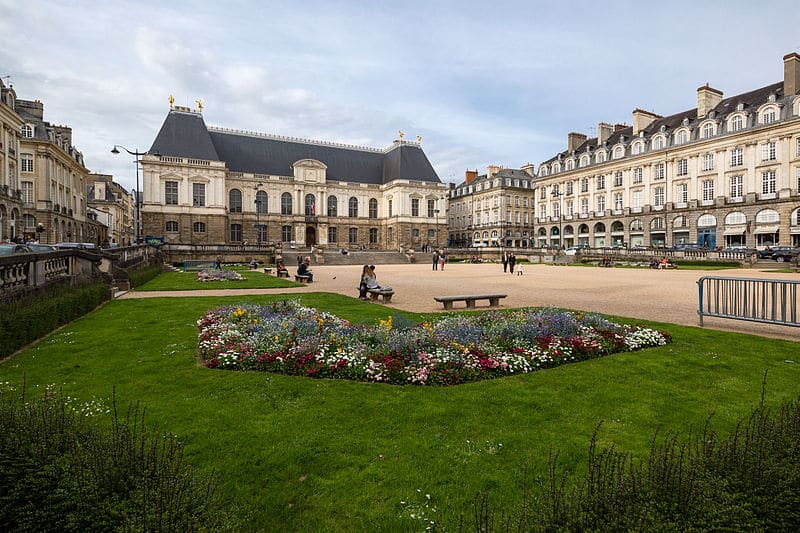
Also Read:
>>What is Rennes Famous For?
>>Is Rennes Worth Visiting?
Belle-Île-en-Mer
Despite its 17 km length and 10 km width, this is the largest Breton island. Belle-Île-en-Mer’s name aptly translates to “Beautiful Island in the Sea”. It has four villages, among which is the village of Bangor on the island’s widest part. Some British monks established it in the 6th-century.
There is Locmaria, a rural township on the island’s highest part encircled by farmland. Sauzon is a small fishing village with narrow streets and a flourishing marina in its well-covered harbor. Belle-Île-en-Me’s major hub of activity in the village of L Palais. Atop the village’s port is a citadel, built in 1549 that now hosts a museum specialized on Belle-Île-en-Mer’s history.
There is a route that transverse the island on the craggy Cote Sauvage coastline. The island’s most beautiful beach is the Plage des Grands Sables. To reach the island, visitors can take a ferryboat in Quiberon, the closest port on the region’s mainland, and a tour should take not more than 60 minutes.
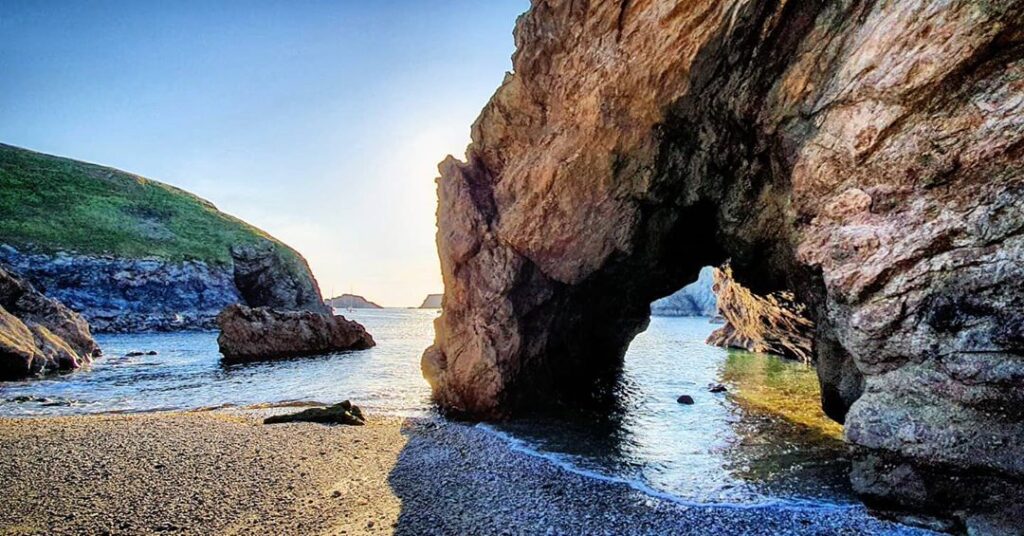
>>Also Read: Visiting Belle-île: Brittany’s Largest Island Guide
Château de Josselin
With its splendid canals and fine half-timbered houses, the medieval village of Josselin is a top attraction in the Morbihan area of Brittany. Aside from the town’s old-world allure, the Château de Josselin is Josselin’s major attraction, which is a stunning example of feudal architecture. In the 11th-century, the castle was built and has been occupied for hundreds of years by the Rohan family.
The town of Josselin gets its name from the son of the Viscount, who constructed the chateau. This stately castle imposes itself over the landscape on the Oust River’s bank with its turreted towers and towering walls. The fine façade displays the Breton Renaissance’s flashy Gothic-esque style.
You can take a guided tour of Château de Josselin to appreciate the largesse interior. The dining and sitting rooms have large fireplaces, and the library features over 3,000 antique books. You will love strolling in the well-manicured lawns and rose garden with around 40 heirloom types. The chateau also features a Doll Museum that highlights dolls dating back to the 1600s.
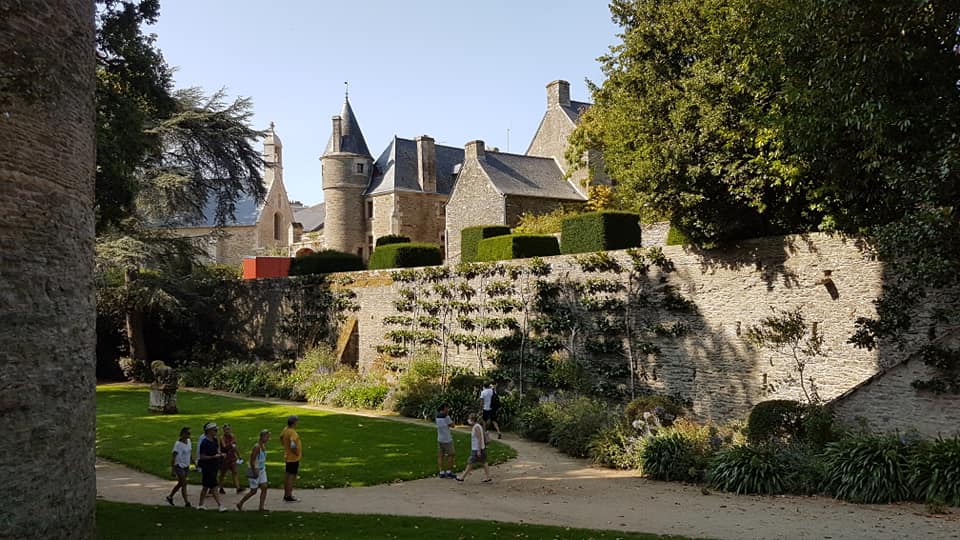
Le Folgoët
Le Folgoët is a village that is worth visiting more than once. Adore the Basilique Notre-Dame du Le Folgoët, which is a pilgrimage sanctuary that dates to the 1300s and still is a significant spiritual destination. Daily, many visitors pay tribute to the Notre-Dame de le Folgoët statue. They also visit to say prayers before the Virgin Mary. This sanctuary has an ornate north tower and a brilliant Gothic style.
What is Brittany Famous For? – Summary
Brittany and history go hand-in-hand. Fortified towns and picturesque villages meet pristine stretches of the coast there. You will discover a lot about the region’s specialties without spending a fortune. From natural sites to be explored with friends and family to activities and a host of fun events to attend, visiting Brittany will be one of your best travel decisions.
